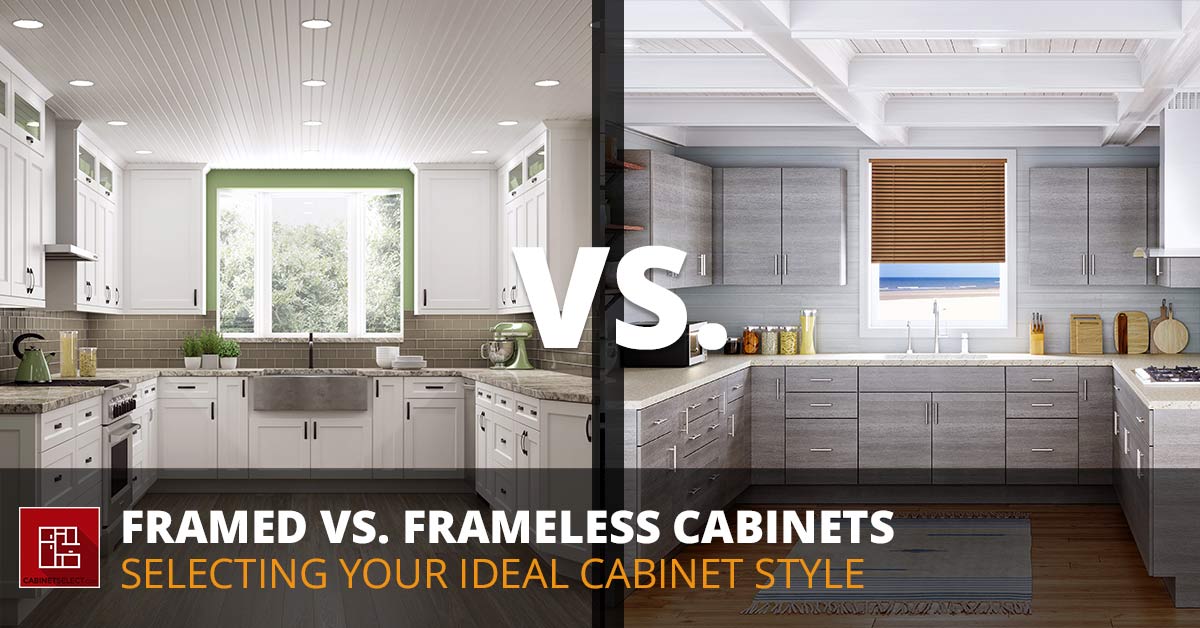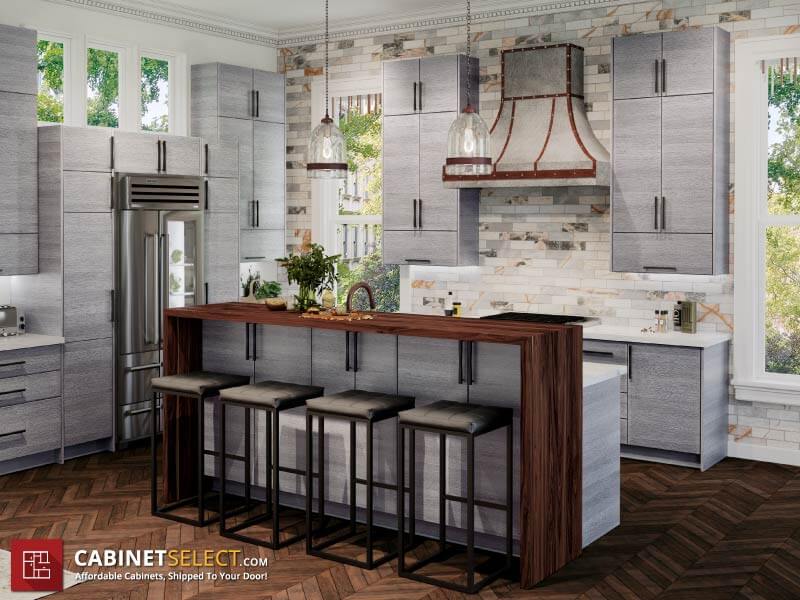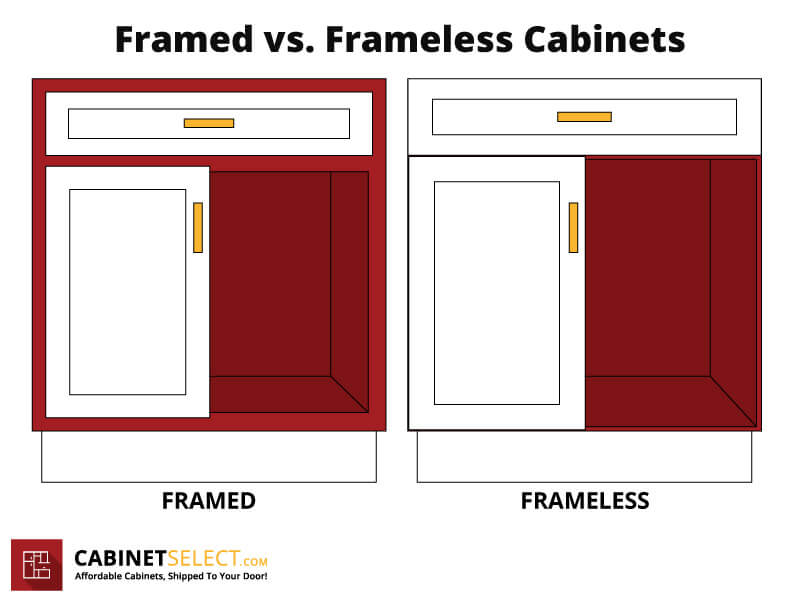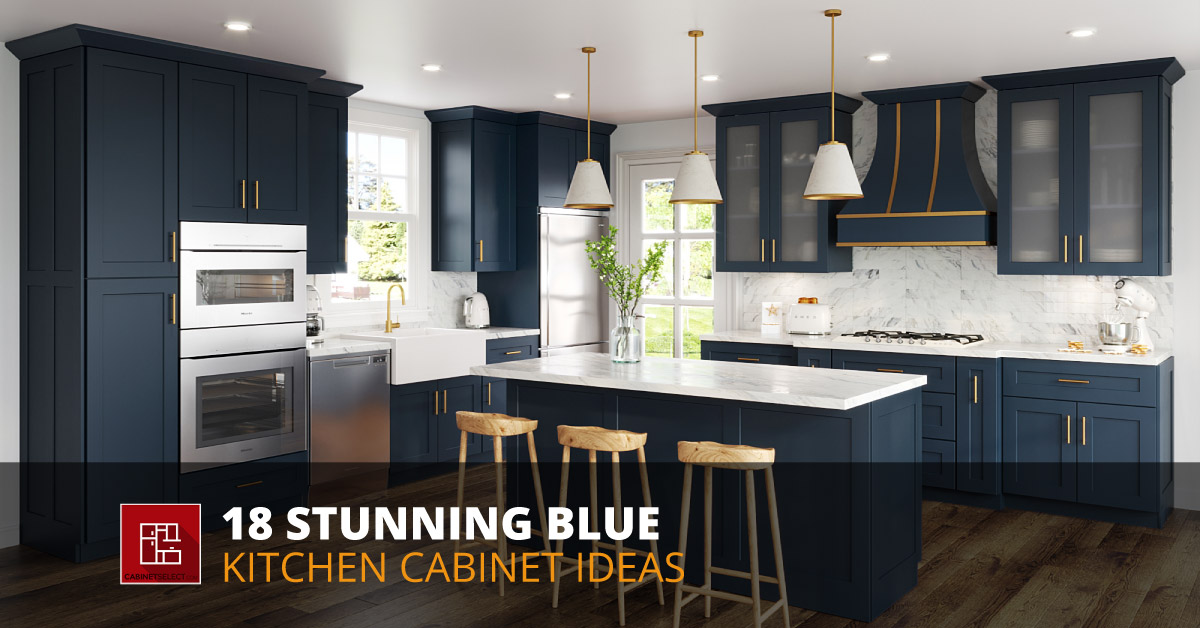
Framed vs. Frameless Cabinets: Finding Your Ideal Cabinet Style
Planning to renovate your kitchen or bathroom space? One of your key decisions will undoubtedly be about the type of cabinets you want to install. Not only are they vital for storage, but they significantly contribute to the aesthetic appeal of your space. It’s crucial to note that all cabinets aren’t created equal. One’s personal preferences and project needs drive their choice. The significant differentiator? Their construction type and distinct looks. Let’s examine the two main types of cabinet construction and understand their advantages and drawbacks, helping you select the best fit for your renovation.
Framed Cabinets
Framed cabinetry, a staple in North American homes, epitomizes traditional elegance and robust construction. These cabinets are renowned for their classic structure, featuring a solid frame that provides added durability and a distinctive aesthetic appeal. As a popular choice among homeowners, framed cabinets offer both functional stability and timeless charm, making them an ideal choice for those seeking to enhance their kitchen with a touch of classic sophistication.
Their design features a solid wood frame affixed to the front of the cabinetry, enhancing its solidity. This type of cabinet construction forms a base for the cabinet doors, drawer fronts, shelves, and hinges, creating a tiny gap between these components. Framed cabinets offer versatile styling options, including inset, overlay, or partial overlay designs.
These styles dictate the visibility of the frame and the resulting gap between the cabinet doors. Inset cabinets sit flush within the frame, creating a sleek, clean line, while overlay designs extend over the frame for a contemporary look. Partial overlay cabinets, on the other hand, offer a balanced blend of traditional and modern aesthetics, revealing a portion of the frame and providing a unique visual texture to your kitchen space.
Pros of Framed Cabinets
- Durability: The solid wood frame provides additional reinforcement, making these cabinets resistant to sagging or warping.
- Design Flexibility:Framed cabinets offer more options in terms of door styles, including inset, standard overlay, and full overlay, allowing for a range of aesthetic choices.
- Easier to Install:Because of their structure, they’re actually a bit more forgiving during installation. Small imperfections in the wall or cabinet aren’t as noticeable, making them easier to fit in.
- Stable Mounting:The frame provides a solid base for hinges and drawer glides, ensuring stability and ease of use.
Cons of Framed Cabinets
- Less Room Inside: The frame around the cabinet takes up space. This means you have less room inside for your stuff, especially for big or awkwardly shaped items.
- Heavier and Needs More Support: Framed cabinets are heavier. When you install them, especially on walls, you might need extra support to hold them up.
- Doors Can Get Crooked: Over time, the doors on these cabinets might not line up right anymore. They can start to look a bit off and might not close as well.
Frameless Cabinets
Also known as European-style cabinets, frameless cabinets are popular in Europe and Asia. In harmony with their name, these types have no frame, offering a more streamlined look. The entire cabinet box supports the doors, drawer fronts, and shelves, creating smooth, gap-less lines. When you close the doors and drawers, they cover the entirety of the cabinet box.
Pros of Frameless Cabinets
- Greater Storage Space: With no frame, the entire space within the cabinet box is utilizable as storage.
- Clean Lines:Frameless cabinets provide a seamless look with tight door gaps and consistent spacing, enhancing a streamlined design.
- Sleek and Modern Look: These cabinets give a clean, contemporary look. They have straight lines and a smooth appearance, making your kitchen or bathroom feel more open and modern.
- Unlimited color options to choose from: Due to their construction and smooth finish frameless cabinets come in hundreds of colors and texture variations.
Cons of Frameless Cabinets
- Less Structural Rigidity:Without a frame, they might not be as sturdy as framed cabinets, which could impact durability.
- Installation Has to Be Spot On: Putting in frameless cabinets has to be done just right. There’s no frame to hide any mistakes, so they have to be perfectly level and lined up right.
- More Careful with Alignment: When you’re lining up a bunch of these cabinets, they have to match up exactly right. Since there’s no frame to give a little room for error, they all need to line up perfectly, which can be tricky.
Comparing Framed and Frameless Cabinets
To guide you further towards the best choice, let’s make a few comparisons:
- Cabinet Doors: Frame cabinets have a small visible gap between the doors. As for frameless cabinets, they boast a seamless, full cabinet box look.
- Storage: Frameless cabinets typically offer more cabinet space due to the absence of a frame.
- Style: Frameless cabinets are often viewed as modern, whereas framed cabinets are typically associated with a more classic, traditional appearances
- Accessibility: In some framed cabinets construction the frame can block the cabinet openings vs the frameless cabinets that don’t have a frame.
Selecting a Cabinet Construction Method: Framed or Frameless?
Your personal preferences and project needs will play a significant role when choosing between frameless and frame cabinets. Here are a few pointers:
Consider Your Project Needs
- Budget: For tighter budgets, go for framed cabinets.
- Space: If space is limited, frameless cabinets maximize storage due to their full box utilization.
- Ease: Framed cabinets are easier to install.
Reflect on Your Aesthetic Preferences
- Style: Choose frameless cabinets for a modern, sleek look. or framed for a more traditional, classic style.
- Durability: Framed cabinets are typically build better with the exception some frameless cabinet lines that offer solid wood frames and fronts.
- Customization: While framed cabinets generally offer more design flexibility, frameless cabinets provide a minimalist, clean, and timeless look.
Understanding their pros and cons will allow you to pick the perfect cabinet to suit your house. If you need further assistance or have any queries, don’t hesitate to contact us!
Frequently Asked Questions
The main differences between the two cabinet types is the way their box is the construction method and the two different looks. Both framed and frameless cabinets are equally sturdy.
Installing frameless cabinets can be more challenging, largely due to their minimalist and clean design. Precision is key in ensuring that all cabinets are perfectly leveled and that the trim work is meticulously installed to achieve a fully built-in appearance. This attention to detail is essential to maintain the sleek, uncluttered style characteristic of frameless cabinetry
Traditionally, frameless cabinetry has been known for its cost-effectiveness compared to its framed counterparts, primarily due to the use of MDF for front doors and particleboard for the boxes. However, this landscape is evolving, with some cabinet manufacturers now offering frameless options that feature higher quality materials and more durable box construction. This shift is bridging the gap in quality and cost, making frameless cabinets an increasingly attractive choice for those seeking both affordability and quality.







